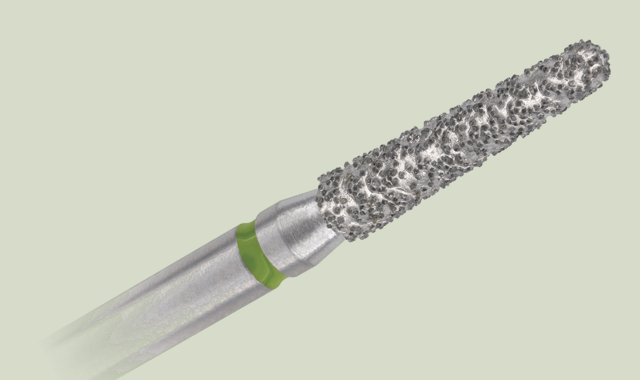A look at DuraBraze® Diamond from Brasseler USA
Brasseler USA has introduced what it describes as the next generation in diamond technology: the DuraBraze® crown and bridge preparation diamond.

Brasseler USA has introduced what it describes as the next generation in diamond technology: the DuraBraze® crown and bridge preparation diamond.
The DuraBraze diamond is said to employ a revolutionary new SpotBrazing™ technology. This patented process is designed to improve both the bonding and spacing of the diamond crystals on the instrument and specifically minimize clogging.
Said to be a precision-engineered instrument with improved diamond crystal bonding and spacing, DuraBraze boasts superior performance, precision and predictability with each use.
Minimizes clogging
Self-cleaning channels reportedly allow debris to be easily removed, minimizing clogging with fewer bur changes. SpotBrazing technology is said to create these channels, allowing water to flow from the handpiece spray to the critical tip. On tooth structure, a cleaner instrument during preparation is said to translate to less heat generation and reduced risk for iatrogenic pulpal injury.
Related reading: 5 reasons to buy Brasseler USA DuraBraze Diamond
Outstanding cutting efficiency
Patented SpotBrazing technology is designed to ensure even crystal spacing, reportedly allowing more diamonds to share in the cutting. By not clogging, the cutting efficiency of the diamond particles is said to be maintained throughout the entire tooth preparation process.
Advanced self-cleaning channels
With more open spacing between diamond crystals, debris is reportedly easily removed and clogging is minimal, which is said to result in fewer bur changes while saving time and money.
Significantly smoother performance
The reported improved handling and feel of the precision diamond layer is designed to provide an ultra-smooth cut with less vibration during bulk reduction. DuraBraze diamonds are said to consistently produce a smoother, more precise finish line, which reportedly results in better marginal fidelity of the final restoration. This is also said to mean a more precise scan for a better restorative margin.
ACTIVA BioACTIVE Bulk Flow Marks Pulpdent’s First Major Product Release in 4 Years
December 12th 2024Next-generation bulk-fill dental restorative raises the standard of care for bulk-fill procedures by providing natural remineralization support, while also overcoming current bulk-fill limitations.